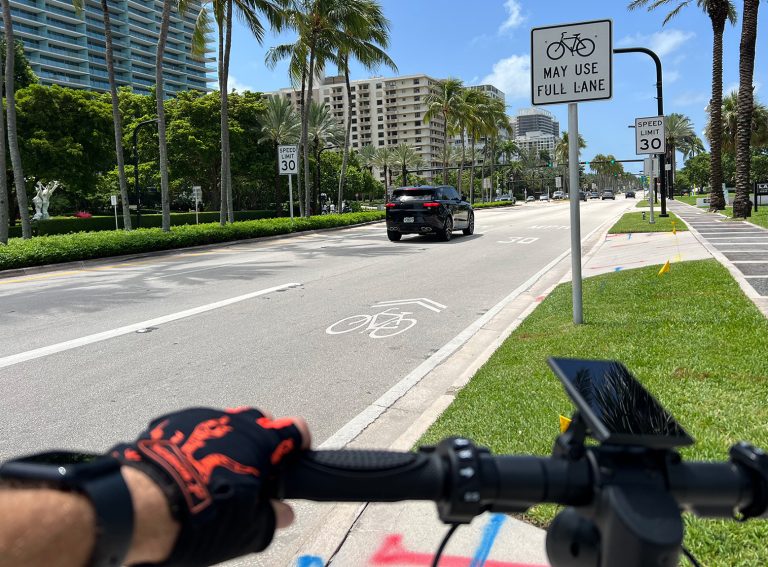“Say adios to traffic jams, polluted streets and busy public transport,” urges Dott’s website, now tempting city travellers not just with e-scooters but also with e-bikes.
Last year, CEO and Co-Founder Henri Moissinac told Zag Daily that Dott wanted to “free our cities with clean rides for everyone.”
The company’s e-scooters and e-bikes may be clean, but they’re not equal on a personal level.
The product with pedals is unarguably better for the individual because, despite the standard e-bike claim of “no sweat,” riding a pedal-assist bicycle involves a raised heart rate, deeper breathing, and a soupçon of oomph. A standard bicycle requires even more leg effort, but an e-scooter requires none.
When every second matters I’ll jump on an e-scooter but when I’m looking to boost my daily steps (or, in Apple parlance, “close my rings”), I walk around them because they won’t get my blood pumping.
Passivity is a significant downside of e-scooters. Sure, they’re swift, a ton of fun, and reasonably cheap, but they’re not — and I’ll yell this — a form of ACTIVE TRANSPORT.
Bicycling is. Walking is. Running for a bus partly is. But e-scooting is purely battery-powered.
Yes, cities want to keep streets moving, and if e-scooters get people out of space-inefficient cars, that’s a huge urban positive, but “active transport” ticks so many more boxes.
And riding an e-bike is fairly and squarely active transport which is perhaps why Dott — and other e-scooter companies also introducing e-bikes — are making sure they cover all of the bases.
“E-Bikes Can Provide a Good Workout,” stated The New York Times last year, citing the plethora of studies that demonstrate — with a bunch of body metrics — that riding an e-bike is not cheating.
The studies show that e-bike riders typically ride further and more often than riders of non-assisted bikes.
When I go on my Saturday morning croissant run across town on an e-bike, I still rack up activity points on my Apple Watch. Not as many as when I ride without mid-motor wattage but still a goodly amount.
If I made the same trip on an e-scooter, I’d maybe get some mental-health benefits, but I’d not burn off any of the naughty fat in that delicious, almond-paste-filled treat.
Faced with a Dott e-bike and a Dott e-scooter, I’d always plump for the e-bike not just because I’m a “bike guy” but because the choice is better for my waistline and my lungs. Exercise, after all, is a drug.
Not everybody is health-conscious, of course (if they were, fried chicken outlets would have no customers), but national and local leaders likely now take raised heart rates into account when evaluating the worth of competing last-mile transport modes. Cars don’t just take up precious space; they inculcate sloth, and even though they have a much smaller urban footprint, so do e-scooters. This is bad news for those hoping that politicians will legalise the use of e-scooters merely because they’re quick and clean.
The effortless aspect of e-scootering goes into the weakness column of any SWOT analysis.
For sloths, the lack of effort is a strength but, again, as we can see with the explosive growth in fried chicken outlets, people are weak and need to be nudged — no, shoved — into more healthful choices.
The best thing e-scooter companies could do to ingratiate themselves with politicians and planners isn’t to jazz up GPS capabilities but to make e-scooters into more like, well, scooters.
Many kids scoot to school with no battery in sight. And remember when kick scooters were the thing? They were swift, but they were also sporty. Maybe e-scooter companies that want to stay as e-scooter companies and not diversify into bikes need to remove some of the “e”? E-scooters that take some effort to propel. They could still bristle with tech, but they could also provide some resistance so those who wanted to breathe a little bit harder could toggle to the “burn, baby, burn” setting and fry some calories.
Naturally, this must not make the e-scooter appreciably slower so any resistance shouldn’t be a constant drag but prompting us to take even just a modicum of exercise per ride is better than doing none at all.








